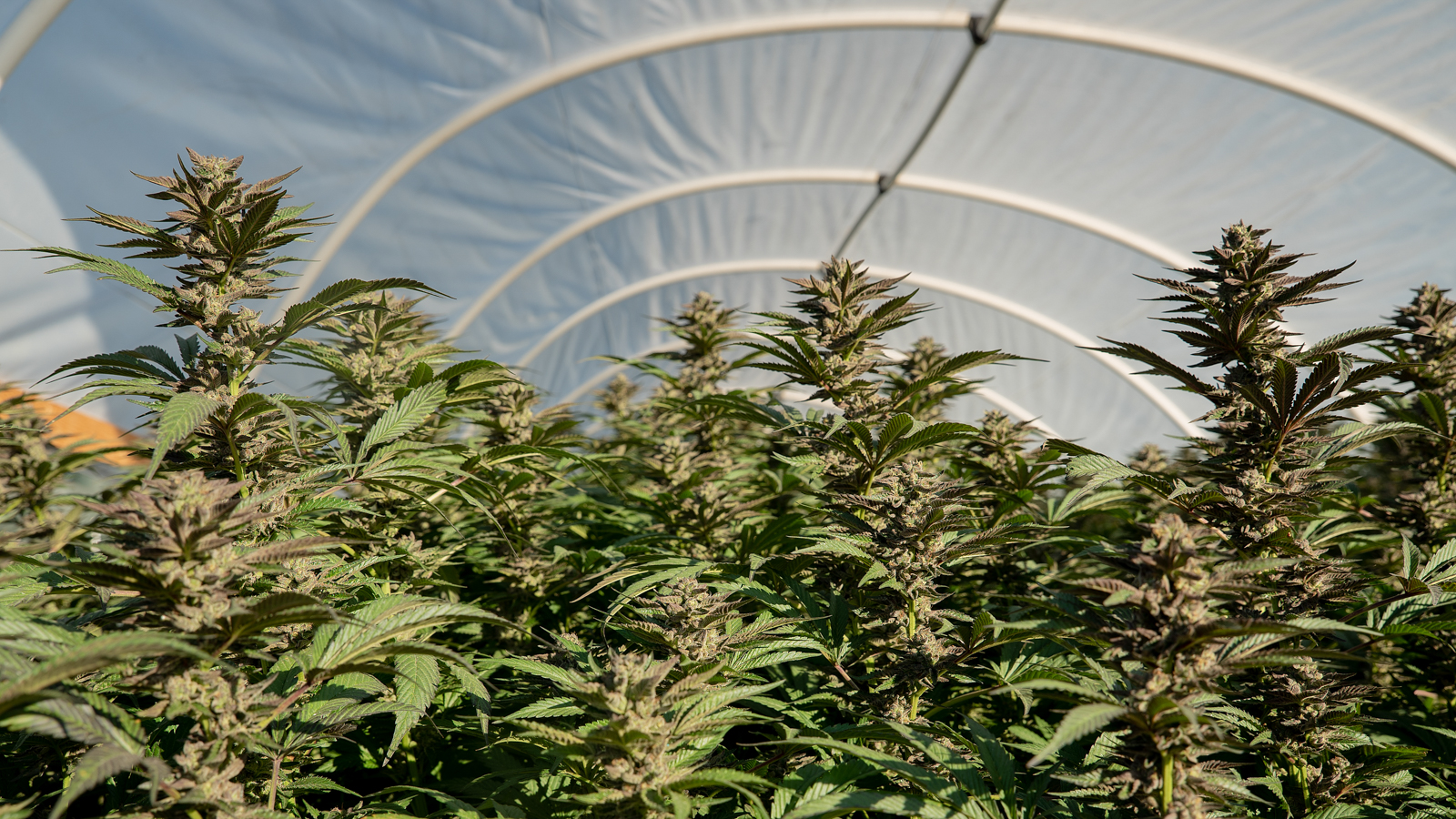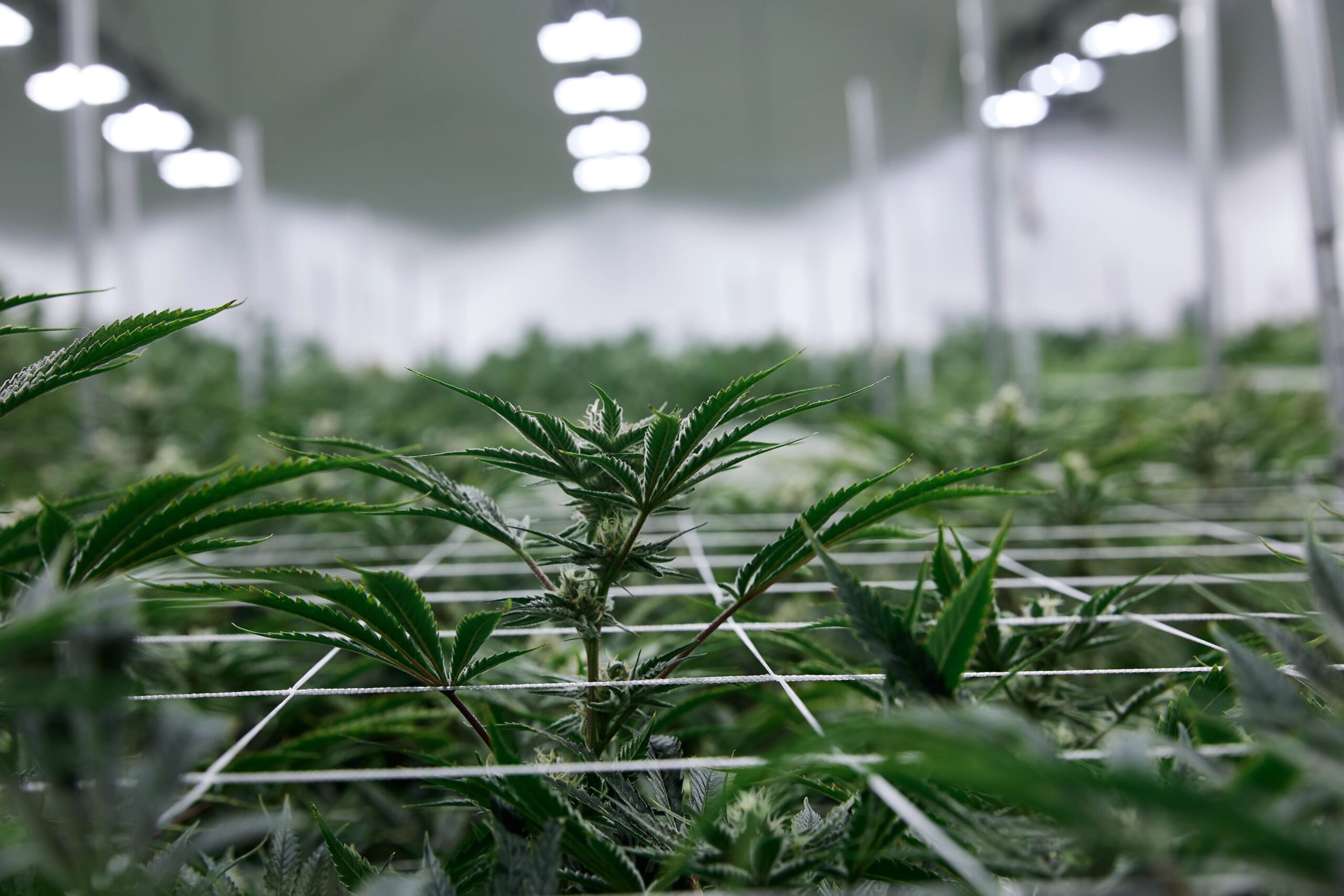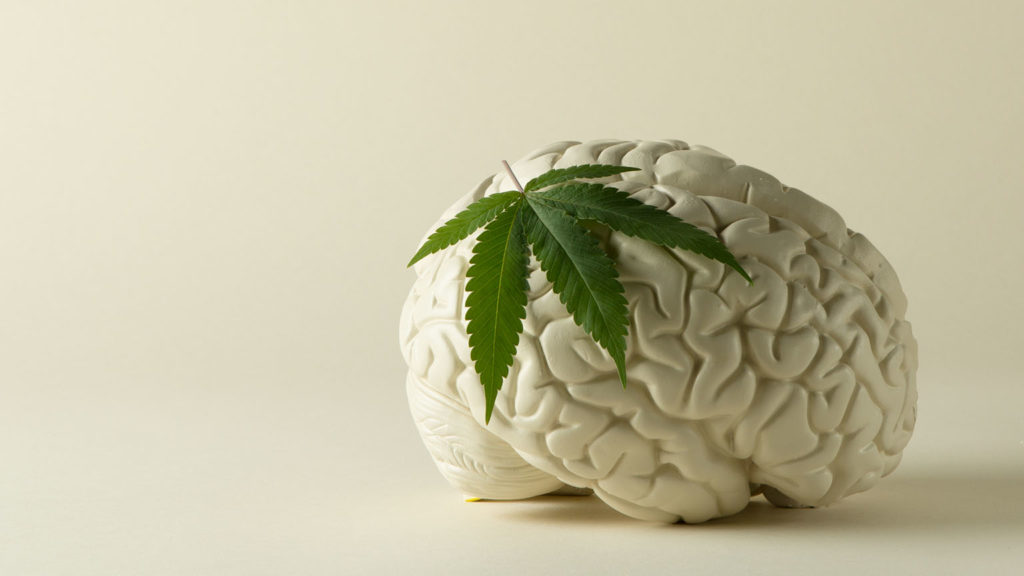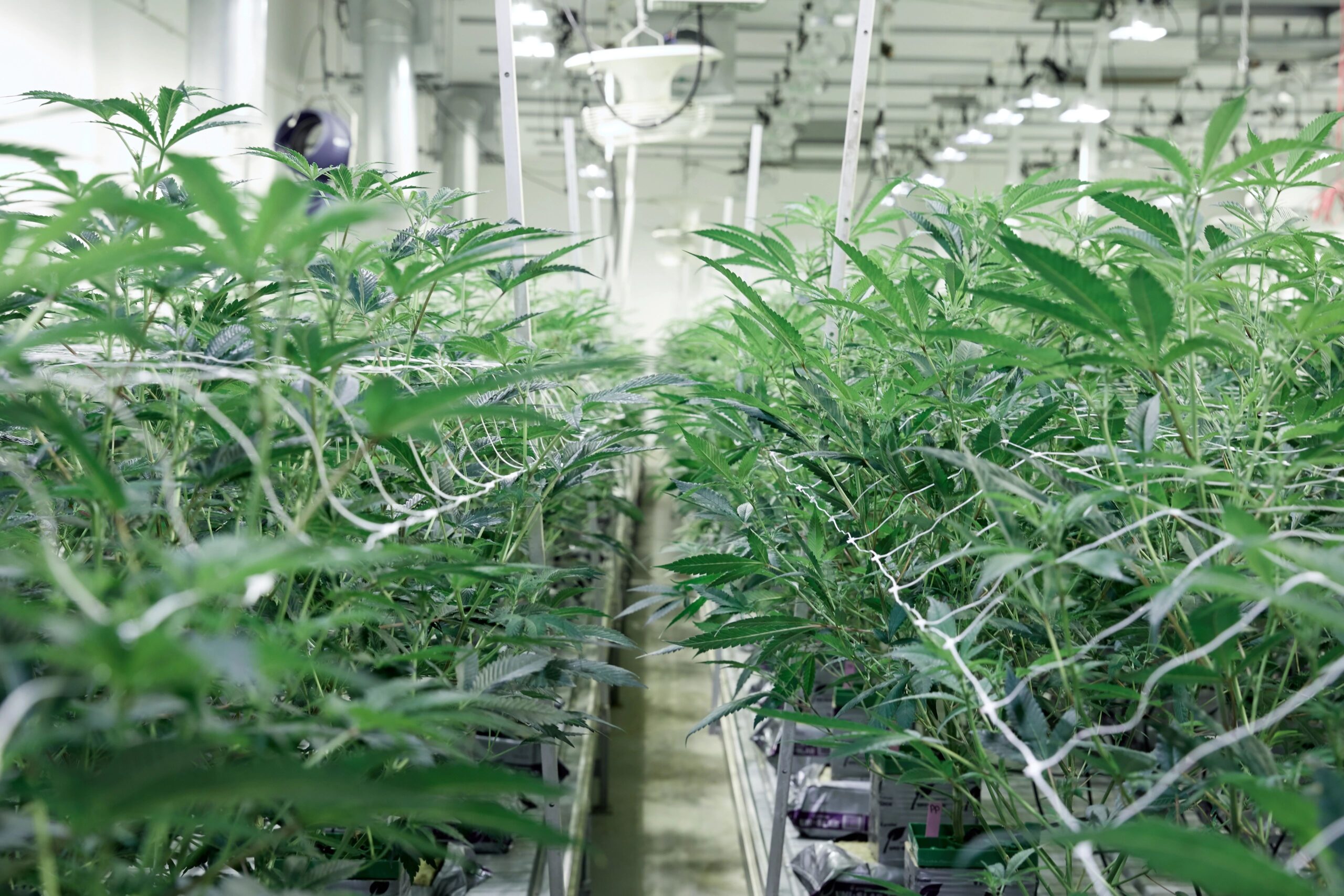- HLVd is not transmissible to humans, but it's estimated to be infecting 75% of cannabis grows
- HLVd has no cure and spreads easily from plant to plant
- The viroid causes plants and flower growth to be stunted and is estimated to cost cultivators billions each year in lost revenue
There's a plant disease as worrisome as COVID spreading to cannabis grows worldwide. While this is alarming, the plant disease in question, Hop Latent Plant Viroid (HLVd or HpLVd), is neither transmissible nor seems to affect humans. Good news for the health of cannabis consumers, but certainly not for growers.
It's been estimated that this silent crop pathogen is infecting 75% of facilities across the US, Canada, and Europe and upwards of 90% of cultivation operations in California, where it can drastically decrease the quantity and potency of their harvests.
What is HLVd?
Also known as Dudding Disease, HLVd is a type of plant pathogen called a viroid. Viroids are related to but different from viruses such as COVID. They're made up of a single strand of RNA that lacks the typical surrounding protein coat commonly found in viruses, and they are the smallest plant pathogens known to scientists, measuring less than 50 nanometers in size.
 Photo by: Gina Coleman/Weedmaps
Photo by: Gina Coleman/WeedmapsImage lightbox

Viroids find their way to the nucleus of the plant's cells, where they hijack the genes and force the cell to replicate the viroid. Then, they spread throughout the plant using its vascular system and sap flow.
What happens to cannabis plants infected with HLVd?
Similar to COVID, the symptoms of HLVd can range from none to severe and depend on the plant's stage of development when it becomes infected:
- Propagation stage: If infected in the propagation stage, root length and emergence can be significantly reduced. This leads to slower development of clones and poor quality of root cuttings. Additionally, this makes the plant more susceptible to other infections.
- Vegetative stage: If infected in the vegetative stage, the plant's growth will be stunted, and other symptoms, such as lateral branching, brittle stems, unusual odor, and shorter internodal spacing, can occur. The leaves also appear smaller, more narrow, malformed, and discolored.
- Flowering stage: If infected in the flowering stage, the plants will appear smaller than usual and may have yellowing of leaves near the bud sites. This is the stage where infected plants show clear signs of HLVd infections and when tested, have higher concentrations of the viroid.
While smaller and less resilient plants are problem enough for cannabis cultivators, the disease also causes a reduction in the size of trichomes produced by the plants, which means a decrease in the potency of phytocannabinoids and terpenes. Some have reported a 30% reduction of total cannabinoid production in infected plants, with others reporting even higher losses.
Electron microscope images of healthy (left) versus infected (right) trichomes.
Photo by: Zamir Punja, PhD
Smaller plants producing smaller flowers with less potency can drastically impact a cannabis cultivator's bottom line, with some estimates putting annual losses to the industry at $4 billion.
How is HLVd detected?
HLVd was first discovered in hop plants in 1987, but it was only first confirmed in California cannabis plants in 2019. The disease can be detected with the Reverse Transcription Polymerase Chain Reaction (RT-PCR) test, similar to the COVID-19 tests we use in humans.
There is no cure for HLVd. However, if a particular strain's genetics are valuable and need to be preserved, they can be restored to their pre-disease state with meristem tissue culture technologies. Tissue culture can also be used to generate viroid-free clones.
How does HLVd spread?
Part of the reason that HLVd has become so prevalent is because it spreads quickly and easily.
When the sap from an infected plant gets onto pruning tools, grower's hands, or any other piece of equipment used in cultivation, it can pass to healthy plants. It can also spread by water sources, especially when the source is recirculated or shared among plants.
Within an individual plant, Dr. Punja's work showed that once a photoperiod plant shifts to a 12-hour light/12-hour dark light schedule for flowering, the viroid's movement throughout the plant becomes much higher.
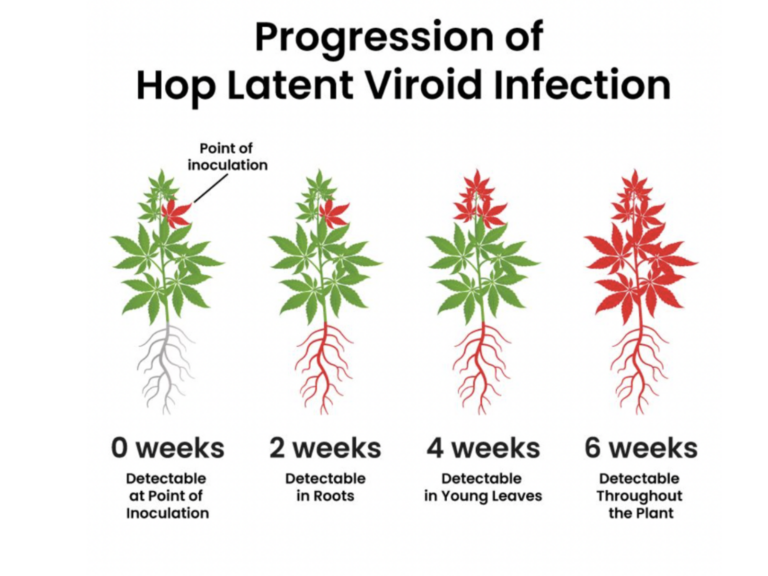
Image lightbox

Photo by: Zamir Punja, PhD
The viroid was found to survive on gloves covered in sap for up to five days and in fallen leaves and root tissues for weeks. Small root tissues infected with the viroid heated to 158°F (70°C) for 30 minutes tested positive. The viroid could not be destroyed in a trial of ultraviolet-C light, which can burn human skin, and HpLVd also appears resistant to other eradication treatments, such as bleach, peroxyacetic acid, and other well-known and commonly used disinfectants.
No studies document the spread of the viroid through insects at this point, but this remains a concern for cultivators. And to complicate matters, plants infected with HLVd can remain asymptomatic for long periods, with some cultivars never displaying symptoms, making containing its spread much more difficult.
What can cultivators do to prevent or avoid HLVd infection?
Cultivators can regularly test plants, with special attention given to new plants or clones in quarantine before introducing them to the facility. Testing regularly and eradicating infected plants has been shown to reduce overall infection rates over time.
General sanitation practices, such as soaking tools in bleach or other disinfectants, are highly recommended. In preliminary research, Dr. Punja reported that an enzyme called a nuclease, found in plants, bacteria, fungi, yeast, and humans, destroyed the RNA in the viroid. Still, products containing nuclease aren't yet readily available.
When looking ahead to future generations of plants, specific genetic breeding could be used to produce plants that are more resistant to the viroid and may become a viable option for reducing the occurrence and spread of the disease.
FAQ
How prevalent is HLVd in cannabis grows?
Hop Latent Viroid has quickly become one of the most problematic plant pathogens faced by cannabis cultivators. HLVd is easily spread and present in about three-quarters of North American and European facilities. It's often present in asymptomatic plants, making its containment challenging.
Are some cannabis cultivars resistant to HLVd?
Recently, scientists at Medicinal Genomics discovered one strain that's been shown to partially resist the effects of HLVd: Jamaican Lion, a sativa with landrace genetics. Though it's not fully resistant, it offers a sliver of hope for other cannabis plants with similar genetics to possibly fight the common viroid.
Can HLVd be cured?
This “COVID” of cannabis causes plants and flower growth to be stunted and is estimated to cost cultivators billions each year in lost revenue. There is currently no cure and little in the way of effective treatments or containment measures.
Bonni Goldstein, MD is a physician specializing in cannabis medicine in Los Angeles, California. She has successfully treated thousands of adult and pediatric patients with cannabis. She regularly speaks about cannabis medicine at conferences and patient groups worldwide. She is the owner and medical director of CannaCenters and medical advisor to Weedmaps.com. She is the author of the recently published book Cannabis is Medicine.

